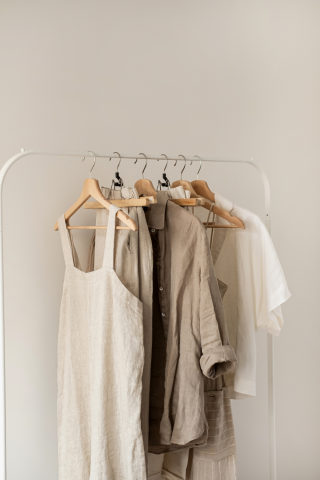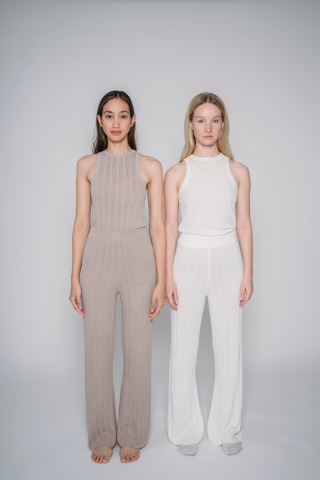A growing awareness of the different needs of neurodivergent and autistic people has prompted a wave of innovation within the fashion space. While an old-fashioned attitude to clothing might stress exclusivity and sacrifice comfort for style, in 2024, the emphasis is on inclusion, accessibility, and creating garments that allow us to feel like our best selves.
What neurodivergent or autistic customers might want from their clothing include comfortability, seamless textures, and ease of wear. Consulting with these communities across all stages of the design and distribution process is vital if designers are to understand the needs of individuals with autism or sensory issues and offer usable, convenient solutions. These design considerations begin from the inception of the garment.

Designers creating seamless garments with minimal or flattened seams can ease discomfort or irritation. Similarly, choosing soft fabrics is ideal (bamboo, cotton, or smooth synthetics) as they minimise any itchiness and irritation. Sensory-friendly accessories, like seamless socks or soft headbands, also provide an alternative to itchy compression lines or tightness behind the ears.
Not using tags on the interior of the clothing like brand labels or fabric composition tags also allows for a snug fit between the garment and skin; an approach that anyone who has wrestled with a floppy label scratching them in the middle of their working day would certainly appreciate! Brands can adapt by displaying this information elsewhere, down the side of a garment, or making the brand label part of an external design feature.
Discreet but easy-to-access pockets are useful for carrying items such as fidget spinners which help people manage their anxiety. Weighted or compression elements also help to comfort the wearer by offering sensory reassurance - think of it as a form of fabric-covered hug!

The next clue is in the comfort: looser fitting silhouettes or garments with adjustable waistbands, cuffs or ties allow for maximal movement. It’s important that wearers don’t feel constricted as this can be a source of anxiety. Elasticated details not only eliminate the fiddliness of buttons and zippers but also make getting dressed more straightforward and comfy.
Adaptive clothing, frequently championed by wearers with motor issues, can also benefit autistic and neurodivergent audiences. This is because adaptive design replaces traditional features which can be time-consuming and awkward with quick, one-step solutions such as magnetic closures, velcro and poppers. Smart materials that regulate temperature can keep the wearer cool and calm; any moisture-wicking fabric minimises overheating or sweatiness.
It’s important to remember that there is no ‘one-size-fits-all’ approach to sensory-friendly clothing and individuals shouldn’t have to trade in their love of fashion for garments that allow them to walk around feeling at ease. More and more designers are adapting their design practice to be more inclusive, and brands such as www.samsensoryclothing.com make this a core part of their brand identity and sell products that are weighted, seamless, tagless and size-inclusive.
Offering customisable options for sensory-friendly pieces allows the wearer to express their individuality through dress; whilst some dressers love to embrace vibrant colour schemes, others prefer calmer colours that avoid visual overwhelm.
It’s not just about design, either. Making these garments easy to maintain and care for can make a huge difference to caregivers or consumers with limited autonomy. Despite this obvious importance, ensuring clarity and simplicity in care instructions is an area that is frequently overlooked in discussions of accessible clothing.
Whilst adaptive and sensory-friendly clothing are not new developments, increased consumer awareness of these sectors manifests in an explosion of new and fashion-conscious options.

With continuing customer feedback, it is hoped that designers will continue to iterate and improve their offerings, including larger brands with the capability to scale their ranges more easily. For example, Japanese chain Uniqlo has already made inroads in this area with its simplistic and practical ranges.
Remember, everyone's sensory needs can vary, so it's essential to consider individual preferences and seek input from those wearing the clothing. Additionally, collaborating with occupational therapists or professionals in the field can help ensure that the clothing meets the specific needs of individuals with sensory sensitivities. Finally, making these products more affordable and visible will ensure that more people can access them and benefit from their thoughtful and considered design.
